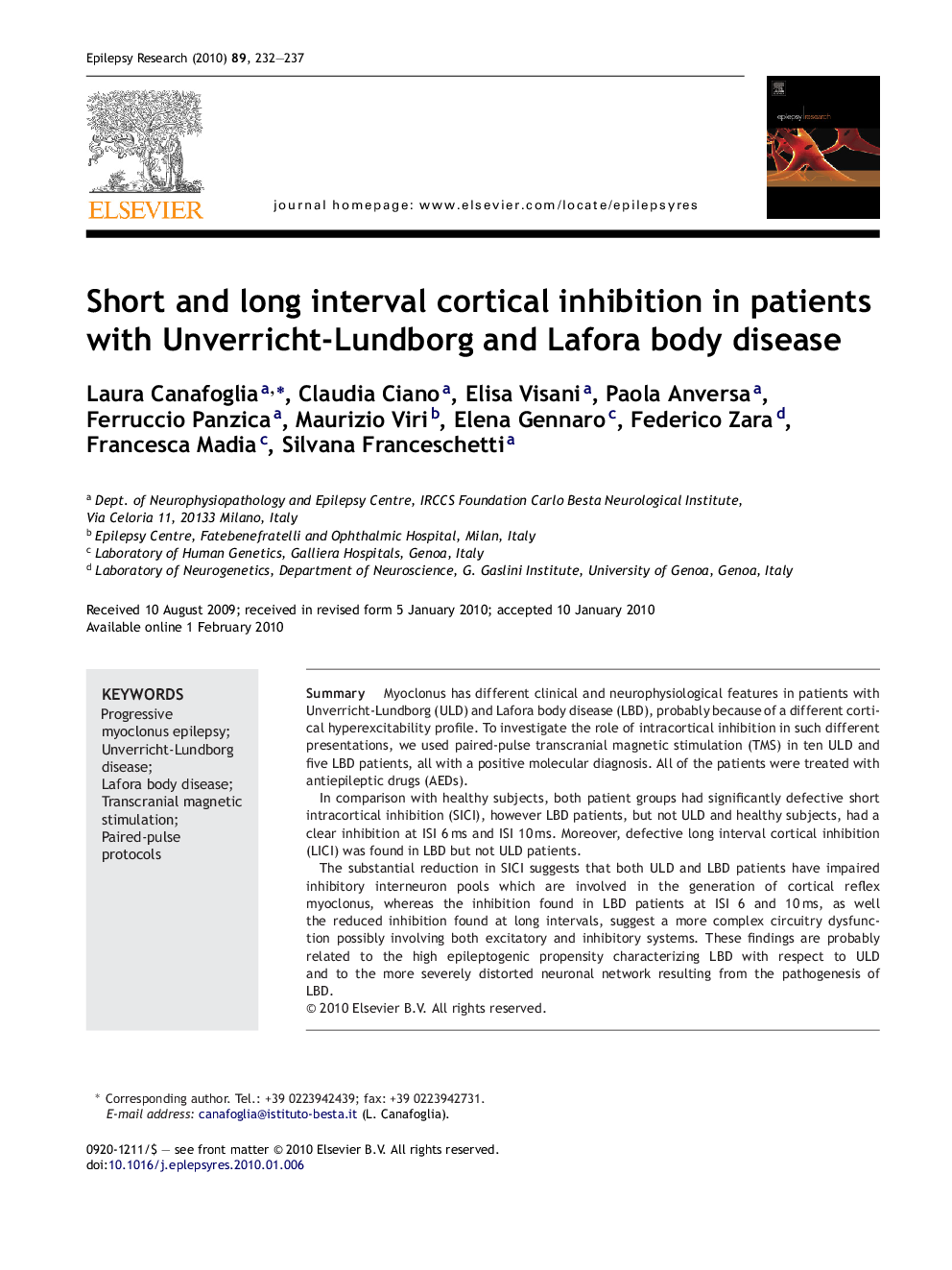| Article ID | Journal | Published Year | Pages | File Type |
|---|---|---|---|---|
| 3052627 | Epilepsy Research | 2010 | 6 Pages |
SummaryMyoclonus has different clinical and neurophysiological features in patients with Unverricht-Lundborg (ULD) and Lafora body disease (LBD), probably because of a different cortical hyperexcitability profile. To investigate the role of intracortical inhibition in such different presentations, we used paired-pulse transcranial magnetic stimulation (TMS) in ten ULD and five LBD patients, all with a positive molecular diagnosis. All of the patients were treated with antiepileptic drugs (AEDs).In comparison with healthy subjects, both patient groups had significantly defective short intracortical inhibition (SICI), however LBD patients, but not ULD and healthy subjects, had a clear inhibition at ISI 6 ms and ISI 10 ms. Moreover, defective long interval cortical inhibition (LICI) was found in LBD but not ULD patients.The substantial reduction in SICI suggests that both ULD and LBD patients have impaired inhibitory interneuron pools which are involved in the generation of cortical reflex myoclonus, whereas the inhibition found in LBD patients at ISI 6 and 10 ms, as well the reduced inhibition found at long intervals, suggest a more complex circuitry dysfunction possibly involving both excitatory and inhibitory systems. These findings are probably related to the high epileptogenic propensity characterizing LBD with respect to ULD and to the more severely distorted neuronal network resulting from the pathogenesis of LBD.
